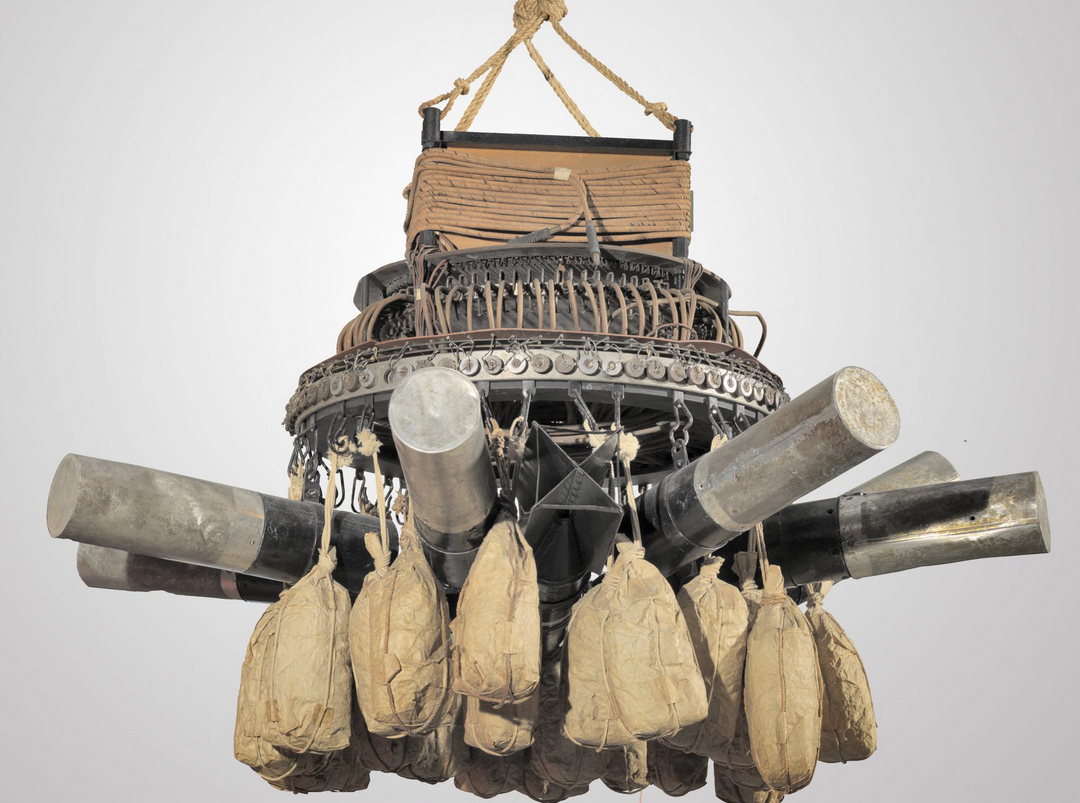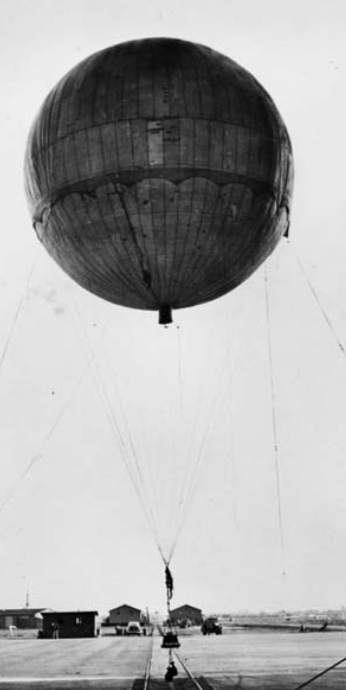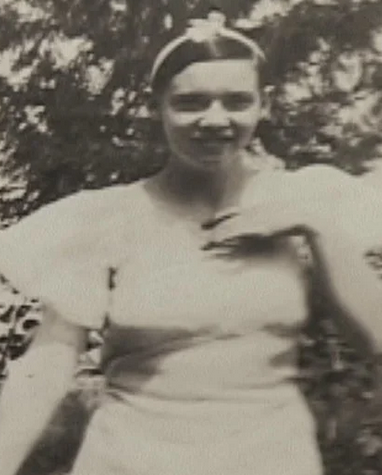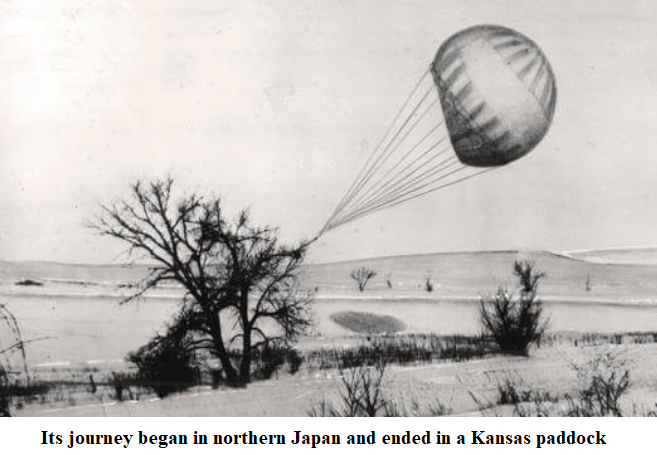I found this article fascinating, as I never knew about this.
Balloonacy, Then and Now – Quadrant Online

The recent shooting down of a Chinese spy balloon by US military reminded me of a previous instance in which balloons were used for nefarious purposes. These were the Fugo fire balloons released by the Japanese to float across the Pacific during World War II. It is a curious story, one that intersects military, social and forestry history.
By the end of 1944 and into the early months of 1945, the American Air Force (USAF) was inflicting terrible damage on Japanese cities. The aerial attacks included the fire bombing of Tokyo on March 10, 1945, in which over 100,000 people died and half the city was razed. The impacts of these “conventional bombing raids” are little recognised today, as they have been overshadowed by the atomic bombing of Hiroshima and Nagasaki several months later. But they had a devastating impact on Japan at the time.
The 1944 and 1945 USAF attacks on the Japanese main islands were made possible by two factors: first, the Americans had bomber bases on islands in the Pacific and the Philippines, close enough to allow a round trip by bombers to Japan; and second, by mid-1944, they were equipped with the new B-29 bomber, known as the Superfortress and by far the largest bomber of World War II. Japan was well within the range of these fleets of giant bombers.
The Japanese had no way of striking back at mainland USA. They lacked a bomber equivalent to the B-29, and had no airfields within range. Large bombers could not be deployed from aircraft carriers … but even if they could, by this stage of the war the Japanese carrier fleet was severely  depleted and was seriously threatened by the US Navy’s superior carrier and submarine fleets. Consequently, the Japanese conceived an alternative method of attacking north America: launching unmanned bomb-carrying balloons.
depleted and was seriously threatened by the US Navy’s superior carrier and submarine fleets. Consequently, the Japanese conceived an alternative method of attacking north America: launching unmanned bomb-carrying balloons.
The concept was intriguing. The Fugo fire balloons, as they were called (sometimes written Fu-Go), would be released in Japan and carried east on the prevailing winds across the Pacific Ocean to land in the western states of the USA and in British Colombia. The intention was to start forest fires which would panic the North American population and draw off resources from the war on Japan.
The first Fugo balloons, like the one at left, were released in November 1944.
The balloons were very large. They measured 11 metres in diameter and 30 metres from the top of the balloon to the foot of the payload hanging beneath. They were extremely flimsy and hazardous, being constructed (originally at least) of rice paper, held together by glue made from potatoes. They were inflated with hydrogen. The balloon carried 36 sand-filled paper bags as ballast, four incendiary bombs and one small anti-personnel bomb.
It would take a balloon 3-5 days to float across to north America from Japan, travelling at about 35,000 feet and at a speed of about 160 kms per hour.
The balloons could not be 100 per cent sealed, as you would expect from the method of manufacture, and the hydrogen slowly leaked out. As it did so, the balloon would begin to descend. When they fell to about 25,000 feet, an ingenious barometric pressure switch would trigger the release of a ballast sandbag, and the balloon would rise again to 35,000 feet. Again, as a result of further hydrogen-leakage, it would gradually begin to sink, and the procedure would be repeated. This rising and falling continued as the balloon crossed the Pacific Ocean. By the time a Fugo balloon reached the American coast, the sandbag ballast would be exhausted, and the barometric gauge would then progressively release the incendiary bombs. After the final bomb was dropped, a fuse was ignited and the balloons would blow themselves up, and fall to the ground as a fireball.
Military historians estimate that about 9,000 Fugo balloons were launched from Japan between November, 1944 and April, 1945, and that about 1000 of these actually reached continental North America. The remainder were assumed to have self-destructed over the ocean. There were reports of balloons observed exploding in the air and a small number of others were found on the ground, usually in remote areas and occasionally with the bomb load still attached. Fugo balloons were found on the ground in 16 states of the US (including Alaska, Washington, Oregon, California, Montana, even as far east as the mid-western state of Michigan and Texas). They were also found in British Columbia and northern Mexico.
Not one significant forest fire resulted from fire balloon attacks. This is not surprising. Mostly they arrived in the Pacific Northwest during the cold, wet and snowy winter months. Several minor forest fires in southern California were attributed to the ballons, although the cause of these fires was never verified.
The first discovery of a Fugo balloon in North America was made by two forestry workers. They came across a downed balloon in forest country in Montana in December 1944, and reported it to the military authorities. The Japanese origin of the balloon was determined by a geologist who analysed the sand from one of the balloon’s ballast sandbags. Tight censorship was immediately imposed on further balloon sightings, since it was feared that disclosing when and where balloons were being found would encourage the enemy to launch more balloons and perfect their delivery. The general public was not told about them until May 1945, about six months after  they were first launched.
they were first launched.
The public was finally informed after a tragic event on May 5, 1945. A parson’s wife, Elsye Mitchell (right), and five children on a church picnic were killed in a remote part of Oregon after they discovered a downed balloon and triggered the anti-personnel bomb. All six were killed. These deaths were the only known fatalities on the US mainland from enemy attack during World War II.
As a result of this tragedy, a general alert was issued, all people living “west of the Mississippi” being warned to report balloon sightings and to stay away from downed ones. The authorities emphasised that the balloons carried no personnel, and posed no threat to public safety so long as people did not approach them.
Another interesting aspect of the project was that balloon manufacture was carried out in Japan by schoolchildren. Presumably all other able-bodied people were already engaged in some other aspect of the war effort or in food production. One wonders about the accident rate during manufacture, incendiary and anti-personnel bombs being tricky to handle, hydrogen being so flammable and schoolchildren being, it is reasonable to suppose, poorly trained and without protective equipment. It is also interesting to compare this method of bomb-delivery with aerial weaponry developed by the Germans during the latter part of World War 2: the V1 and V2 rocket bombs and the jet fighter. However, as with balloon technology, none of the German innovations had any influence on the outcome of the War.

The Fugo balloon project ceased in mid-1945 with Japan facing the imminent crisis of invasion, but also perhaps because the feedback from the USA and Canada was that the program had failed entirely to meet its expectations. Nevertheless, it is interesting to speculate whether a more sophisticated balloon, operating at the height of the northern summer fire season, might not have given some serious headaches to forestry firefighting agencies, at that time extremely short-staffed due to the war.
The thing that still puzzles me is that the ingenious scientists who conceived the idea and designed the balloons did not consider the futility of fire-bombing forests in the Pacific North-west during winter.

